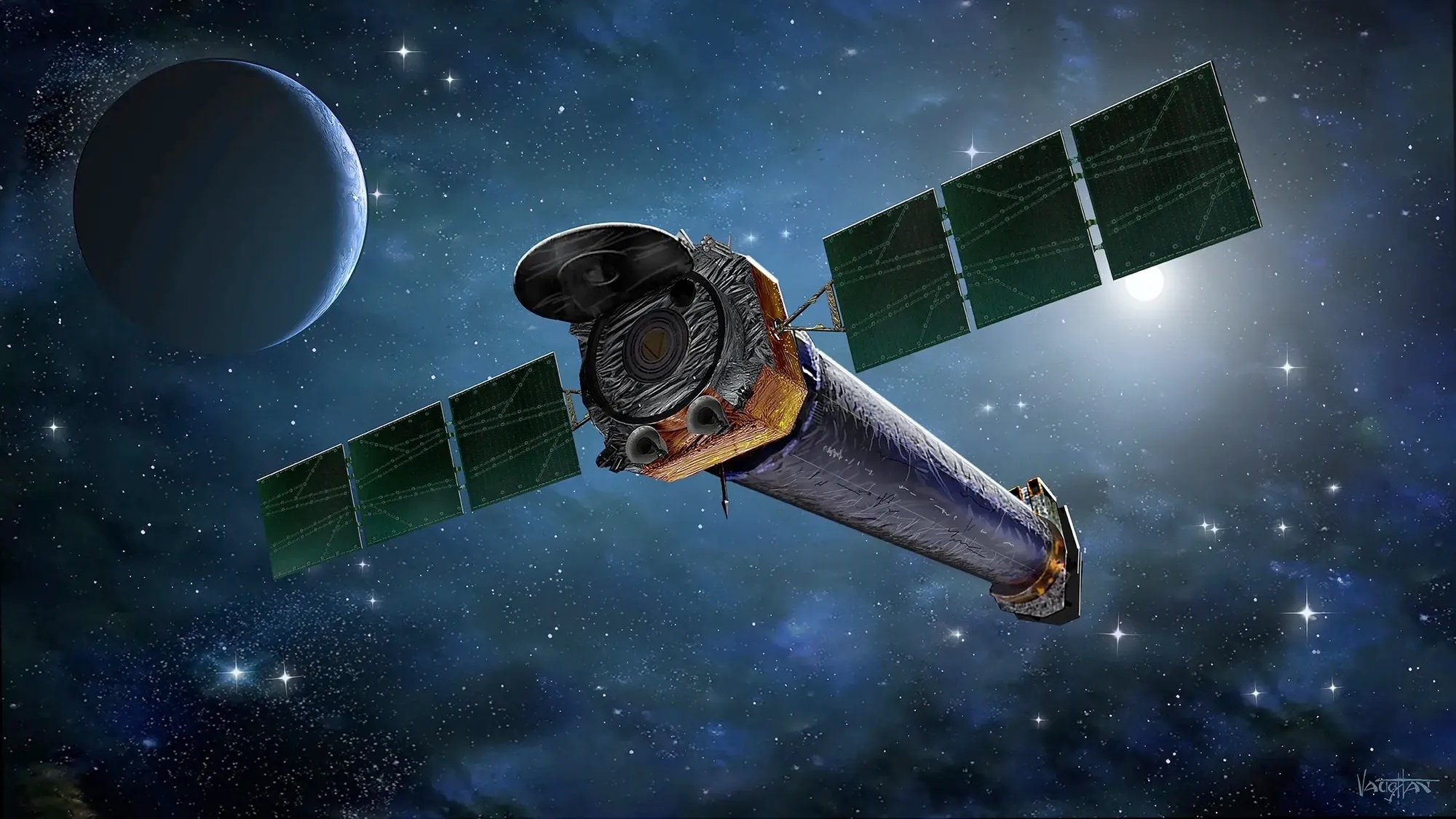26.10.2024

The Chandra X-Ray Observatory (above) and Hubble Space Telescope could face budget cuts as NASA deals with overall spending reductions. Credit: NASA/CXC & J. Vaughan
WASHINGTON — NASA has deferred any plans to reduce operations of two major space telescopes as a cost-cutting move until after the agency receives its final appropriations for fiscal year 2025.
At an online town hall session Oct. 23, Mark Clampin, director of NASA’s astrophysics division, said the agency was holding off on any changes in the operations of the Chandra X-Ray Observatory and Hubble Space Telescope while awaiting Congress to finalize appropriations for the fiscal year that started Oct. 1.
“That means we’re taking no further steps forward with Chandra or Hubble at this time,” he said.
NASA, in its fiscal year 2025 budget proposal released in March, proposed a 40% cut in Chandra’s operating budget to $41.1 million, while Hubble’s budget would be cut by about 10% to $88.9 million. The agency said the cuts were needed to keep a balanced portfolio of missions in operation and in development while grappling with budget pressures.
NASA convened a committee called the Operations Paradigm Change Review (OPCR) to examine the options for implementing those cuts. That review concluded that it would not be possible to operate Chandra at the proposed level of $41.1 million. “This is a serious threat to the observatory,” Rob Kennicutt, an astronomer who served on the OPCR, said at a meeting of the Astrophysics Advisory Committee July 23.
At that meeting, Clampin said he expected NASA to announce its plans for reducing spending on, and operations of, Hubble and Chandra in mid-September during a town hall session. He said then NASA needed to move ahead with plans to reduce spending on those missions even though a final 2025 spending bill would not be complete by then. “We cannot wait,” he said.
Clampin didn’t explain in the Oct. 23 session why the agency was now delaying that decision. In July, there were concerns that the institutions that operate the telescopes would have to lay off staff in anticipation of budget cuts. However, in late August the Center for Astrophysics | Harvard & Smithsonian, which hosts the Chandra X-Ray Center, said NASA Headquarters had informed it that it found funding to avoid any staff layoffs through the 2025 fiscal year.
When NASA will get a 2025 spending bill is not clear. NASA, along with the rest of the federal government, is operating under a continuing resolution that continues spending at 2024 levels through Dec. 20. Completing a 2025 spending bill could also depend on the outcome of the presidential election and any change in party control of the House and Senate.
NASA is also preparing for the next senior review of astrophysics missions, which will include Chandra and Hubble as well as several smaller missions, starting around the end of the calendar year. It will exclude an instrument on the International Space Station called Neutron star Interior Composition Explorer (NICER) pending repairs of it planned for later this year. Astronauts will make the repairs during a spacewalk to prevent sunlight from leaking into the instrument.
The upcoming senior review will be different from previous ones, Clampin said, with all the missions considered by a single panel. Previously, Chandra and Hubble were reviewed separately. The senior review committee will also have access to the OPCR report.
Probing the probe decision
The town hall meeting also discussed NASA’s recent selection of two concepts for the first astrophysics probe, a class of competitively selected missions with a cost of about $1 billion that are larger than Explorer-class spacecraft but smaller than flagships like the James Webb Space Telescope and Nancy Grace Roman Space Telescope.
NASA announced Oct. 3 it selected the Advanced X-ray Imaging Satellite, or AXIS, and Probe far-Infrared Mission for Astrophysics, or PRIMA, missions for further study. Each proposal received $5 million for one-year concept studies to support a NASA decision in 2026 on which mission to develop for launch in 2032.
Astronomers participating in the town hall submitted questions raising concerns about how those missions were selected, suggesting that they were not necessarily the two highest-ranking proposals. Clampin declined to discuss the selection process because the agency was still in the process of debriefing teams whose proposals were not selected. He said he would be able to talk about the selection process at the next meeting of the Astrophysics Advisory Committee, scheduled for Nov. 7–8.
He added that NASA was committed to following the recommendation of the Astro2020 decadal survey, which called for one probe mission per decade. “It is my expectation that we will move forward with a cadence of about one probe per decade.”
Quelle: SN
